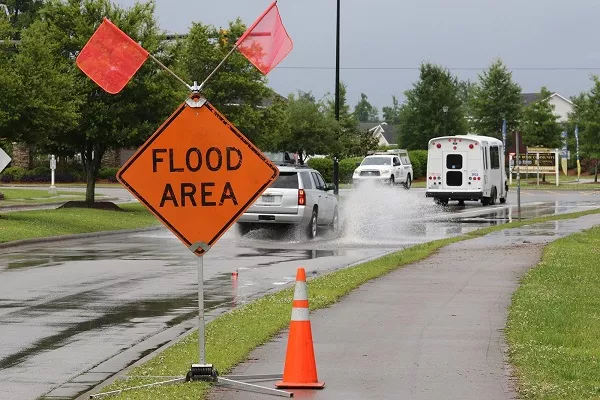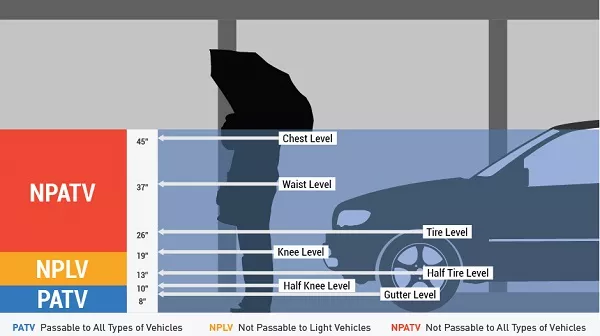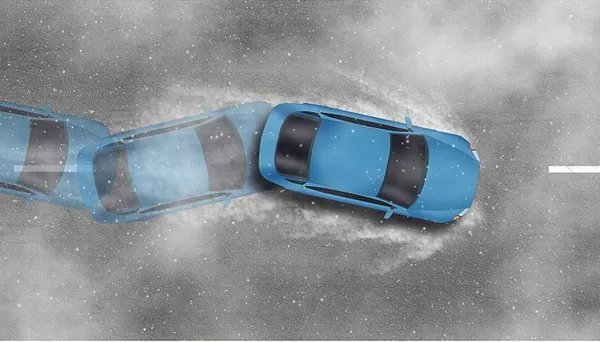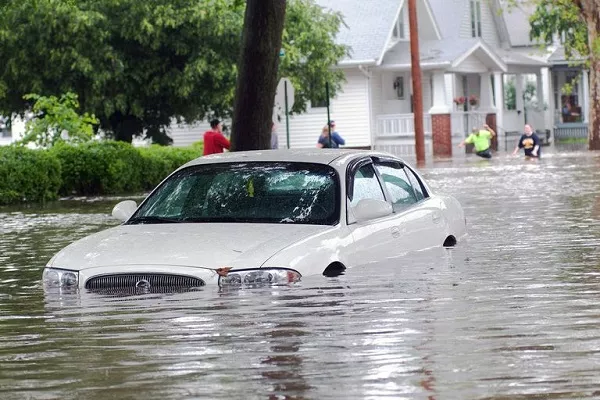As being one of the countries with the very high chance of disasters, a flood is a situation that is common in the Philippines, whether it may be caused by a storm, normal rain, or continuous light rains. In fact, we have seen people walking through the flood like it is a normal thing. That is, of course very dangerous and driving into flood water is no different.
In this article, Philkotse.com will discuss the things you need to consider before driving into flood water and how you’d go about it.
I. Why Driving on Flooded Roads in the Philippines is NOT Advisable
Generally speaking, vehicles have electrical systems and metal parts that can be affected when they are exposed to water. Similarly, the engine can suck up water that might affect its performance as well as damage its parts. Yes, there are modern cars that are weather-resistant, but they are still vulnerable to water.
Do take note also that cars will start to float at a water level of 12 inches or 30 centimeters, and fast-flowing waters will immediately move your car at the same depth. Additionally, your car will be swept away without any warnings when the water level is around 24 inches or 60 centimeters. Cars designed for off-road driving such as 4x4s can also be swept away when driven on flowing water with a depth of two feet.

4x4 Vehicles Are Designed to Traverse Water BUT Also Have Limits
Apart from the damage that your car might receive, you're also at great risk of facing accidents when you are driving through flood water.
Firstly, there are holes on the road that are not visible and once you drive through it, you can either get stuck or when it's deep and big, you and your car will end up being caught inside the flood water.
Secondly, you would definitely encounter other cars wherein the drivers are not as precautious as you are.
With all that said, if you really have no choice but to drive even when the road is flooded, there are some things that you can do to lessen the danger.
II. Tips for Driving in Flood Conditions in the Philippines
Nobody wants to be in a situation wherein they need to drive when it’s stormy and when the road is flooded. However, there are times when you need to go to work even when it’s raining hard, or maybe, you are heading home when the rain started to pour, and some parts of the area are already flooded.
You might also be in a situation wherein you need to evacuate your place and use your car to transfer to a safer place. Hence, here are some safety tips that Philkotse.com has collected for you to successfully and safely drive during those situations:
1. Be Observant
You might already know this, but some areas are more prone to floods than other areas, so you need to check for signs that indicate whether you are in a flood-prone area or not. If you are, then it might not be a good idea to drive as the area will be flooded the soonest possible time.
Also, you must try to observe the other cars traversing through the flood as it can help you assess whether it’s safe to drive or not. If small cars can pass through without hardships, then go for it, but if the water reaches the bottom of other cars, think of another route.

Check for Road Signs to Know If It is Safe to Drive on a Certain Area
2. Avoid Standing Water on Parking Lots
Most of the time, floodwater collects in flat terrains such as the parking lot. Although it might seem to be a perfect place to drive since there will be lesser moving cars there, the danger is that the lot itself might not already be there because the flood already destroyed it. So, it is best to avoid it.
3. Estimate the Water Level
According to experts, driving into flood water that is four to five inches deep or 10 to 13 centimeters is acceptable since, at this depth, water is not yet capable of reaching the vehicle’s bottom. You can estimate this by carefully standing on the flooded road.
This guide tells you when it’s safe to drive:
- Sedans and Hatchbacks: Water level is between the ankles and knees
- Standard SUVs and Jeeps: Water below the knee or thigh
- Snorkel-Equipped SUVs and Jeeps: Chest-high water
- Cars with Manual Transmission and Diesel AT Engines: Between the ankles and the knees
You can also estimate water level by using a stick or a gauge or rely on the MMDA or barangay’s flood gauge or cheat code. If you are unsure of the water level, it is best to find another way.

Water Level Guide by MMDA
4. Be Mindful of Electrical Systems
It is a known fact that electricity and water are never friends! That is why it is important to avoid roads where there are fallen power lines, whether it might be a line from the electrical, telephone, or cable company. Additionally, it is also not advisable that you use your phone while driving in the flood unless it is an emergency.
5. Always Aim for the Middle Road
Most of the time, the middle of the road is higher than its surrounding. That said, it is only but apparent that you aim to drive on it.
III. Safe Ways of Driving into Flood Water
Once you have assured that it is possible to drive on the flooded road, here is how you should drive to avoid the dangers of driving in flood waters:
- Turn your headlights on as they will help you see clearly through the flood as well as see incoming cars, as well as them seeing you.
- Drive slowly, specifically one to two MPH or three to four MPH if you are using a 4x4 vehicle.
- Use first or second gear only if you are driving a manual (L or one if you are using an AT car) while keeping the revs up.

Hydroplaning: Cars Can Slide Uncontrollably When You Drive Fast on Wet Roads, SO Drive Slowly
- Always make sure that vehicles pass through the flooded road one at a time. This means that you should only approach the road once the vehicle before you had already cleared the road in front of you.
- Be mindful of your car tires’ grip since once it starts to loosen, it means that it is starting to float. In this situation, you can slowly open the door and allow little water to enter to weigh it down. However, you should not stop revving up your engine.
- In case you get trapped in rising water, it is possible to restart your car, but it might damage your car after. If you can’t restart, it would be best to turn off the engine and leave the car to go to higher ground or ask for help.

Don’t Risk Your Life! When stocked, just leave your car and stay on higher ground and seek for help
IV. Yes, You Can Drive Safely on Flooded Roads!
Being a kind of a natural disaster, floods are uncontrollable and unpredictable but there are times when you might have no choice but to continue driving or to drive. The safest way when driving into flood water is to make sure that your car can handle the water level.
If you are familiar with the area, better, but if not, you must be vigilant and observant. And, of course, always drive slowly and steadily to avoid crashing as well as water from entering your car’s engine.
Once you succeeded in driving along the flooded road, you must make sure that you give your car a proper after-flood care so that you can limit or avoid future damages.
Mangkhut - the PH's fiercest typhoon is pulling in, visit Philkotse.com for helpful driving tips and stay well-prepared behind the wheel!












